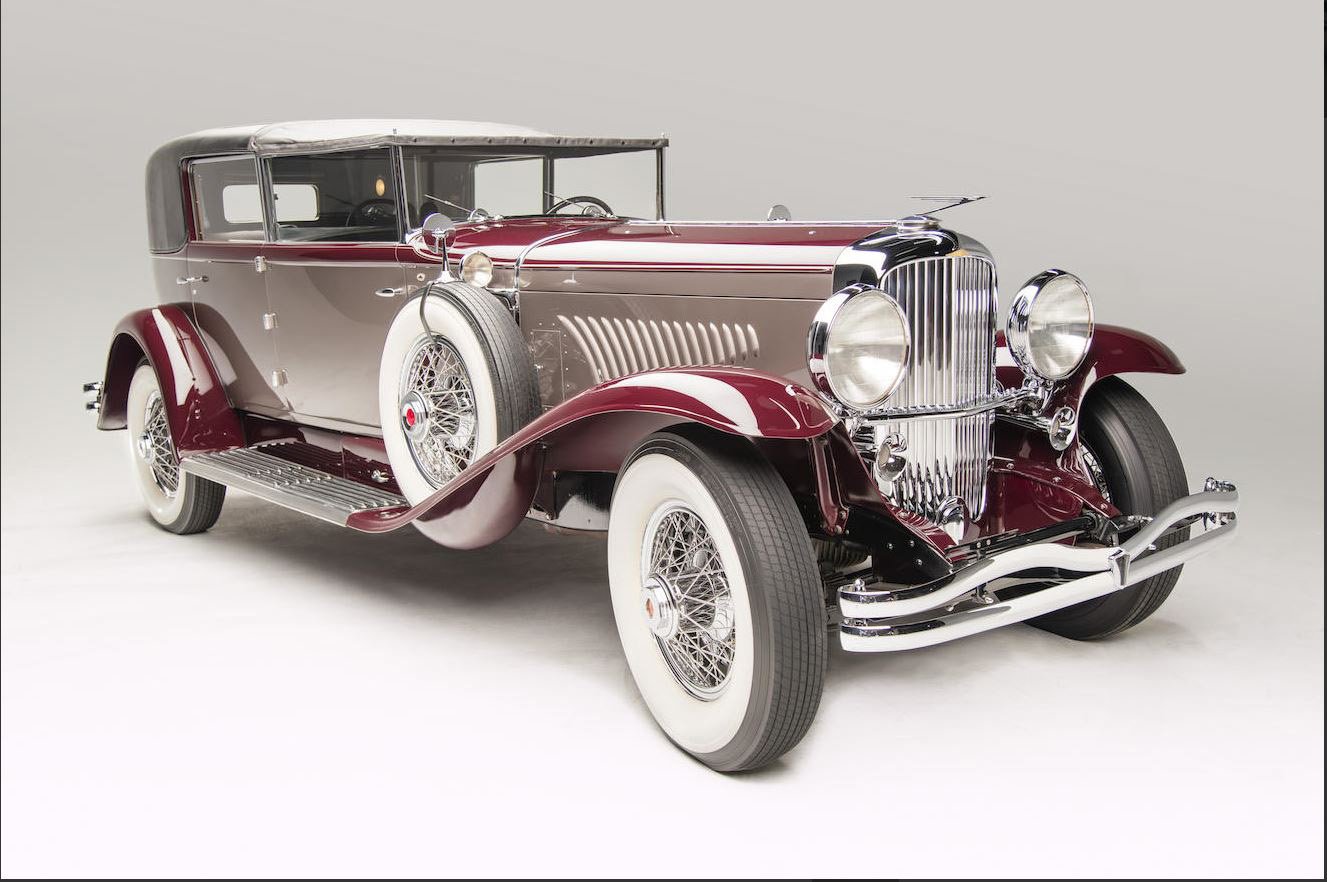1930 Duesenberg Model J Murphy Town Cabriolet






Sleek car image from its narrow windshield posts, aluminum pillars, and relatively flat roof.
Race derived twin cam engine boasted 265 hp, a number that was unimaginable from a larger passenger car in the period.
A chassis with a study ladder frame made from alloy steel.
Few names in motorcar history are as evocative wealth and power as Duesenberg. The company’s advertising made history in the various ads placed in posh society periodicals such as Country Life and Town & Country as one of the first campaigns to deliberately not feature an image of the product – simply a charcoal sketch of a wealthy individual and the line “He [or she] drives a Duesenberg.” From this tagline denoting luxury, we have the modern catchphrase “it’s a Doozy.”
This magnificent 1930 Duesenberg Model J Towncar was purchased by Nanaline Holt Inman Duke, widow of James Buchanan Duke, founder of the American Tobacco Company. Duke, the mother of Doris Duke, had the rolling chassis sent to Murphy in Pasadena, California to construct a town car. The car was completed quickly and sent to Ms. Duke on Halloween that same year. This is an incredibly special car to us, as it was used to transport Ms. Duke between her residences in New Jersey and Newport, surely making a statement when travelling up and down Bellevue Avenue.
Though they were built during the Great Depression and cost more than a Rolls-Royce or a Hispano-Suiza, the Model J Duesenberg had no problems attracting customers in the beginning. The Murphy Town Cars sported some unique features, such as the narrow windshield posts, aluminum pillars, and a relatively flat roof that gave the car a sleek image despite the large formal body. Among the rich and famous who drove Duesenbergs were film stars Greta Garbo, Al Jolson, Gary Cooper, Clark Gable and Dolores del Rio, whose husband Cedric Gibbons, famed film art director and creator of the "Oscar" statuette, was also a keen Duesenberg owner. Among its remarkable features was a twin-cam race-bred engine – a purpose-built 32-valve Lycoming 419 C.I. DOHC straight-eight said to develop 265 horsepower.
The Duesenberg’s race derived twin-cam engine boasted an incredible 265 horsepower, a number that was unimaginable from a large passenger car in the period. With light bodywork, it was possible to achieve 90 mph in second gear with a maximum speed in the region of 110 mph in high gear. Even with more substantial Town Car bodies, performance was impressive. Ride and handling were exceptional for the period, matched by 15-inch hydraulic brakes all around. Every chassis built was tested for 500 miles on the Indianapolis Motor Speedway before being handed over to a leading coachbuilder for the construction of custom bodywork. These chassis’ had a sturdy ladder frame made from alloy steel.
Specifications:
Configuration: Front engine, rear wheel drive
Engine: Inline 8-cylinder
Displacement: 420 cu in
Horsepower: 265HP
Torque: 374 lb/ft
Max RPM: 4,200rpm
Transmission: Warner Hy-Flew 3-Speed Manual

